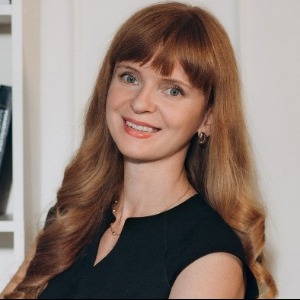Title : Diversity of phototrophs in the Crimean hypersaline lakes and lagoons and their biotechnological potential Elena Anufriieva
Abstract:
Widespread, including in Crimea, hypersaline water bodies are among the most polyextreme habitats on the planet. To live in polyextreme environment, organisms has led to the development of a variety of adaptive mechanisms with a synthesis of unique secondary metabolites. This provides the possibility to use organisms dwelling hypersaline waters in different areas of biotechnology and aquaculture. There are more than 50 hypersaline water bodies including different lakes and Bay Sivash (The Sea of Azov), largest hypersaline lagoon in the world. There are three groups of phototrophs, which use different types of phototrophy: oxygenic photosynthesis (cyanobacteria, microalgae, and plants), anoxygenic photosynthesis (purple and green bacteria) and proton bacteriorhodopsin pump (archaea). The study of phototrophic organisms in hypersaline reservoirs of the Crimea has a long history; nevertheless, many of their taxa are still poorly understood. To date, 110 species of cyanobacteria have been found in them; they are massively growing in plankton and benthos, and 70 species of eukaryotic algae of various orders in plankton. In benthos, only diatoms have been studied - 74 species. Among multicellular phototrophs, 7 species of green filamentous algae and 4-5 species of flowering plants were found. The variety of anoxygenic phototrophs is significantly lower (approximately 14 species). In halobacteria, there is only the widespread in such habitats Haloquadratum walsbyi. Diversity of these groups in the Crimean lakes and lagoons provide a lot of perspectives for their practical use. As an example, among cyanobacteria in the Crimean hypersaline waters, 17 genera are noted, 11 of which include potentially toxigenic species producing cytotoxins, hepatotoxins and neurotoxins. These toxins can be used in the development of new drugs. From the samples collected on the Kerch Peninsula, two strains of Nostoc f. linckia Bornet ex Bornet & Flahault 1886, which are characterized by toxicity, were isolated and investigated. Neurotoxin nostokocarbolin was extracted from Nostoc, and it can be used to create new promising drugs for the treatment of Alzheimer's and Parkinson's diseases.
This study was supported by the Russian Science Foundation (grant 18-16-00001).
Take Away Notes:
• It provides new information, gives new data and ideas on a biotechnological and agri-aquacultural use of phototrophs from the Crimean hypersaline lakes.


